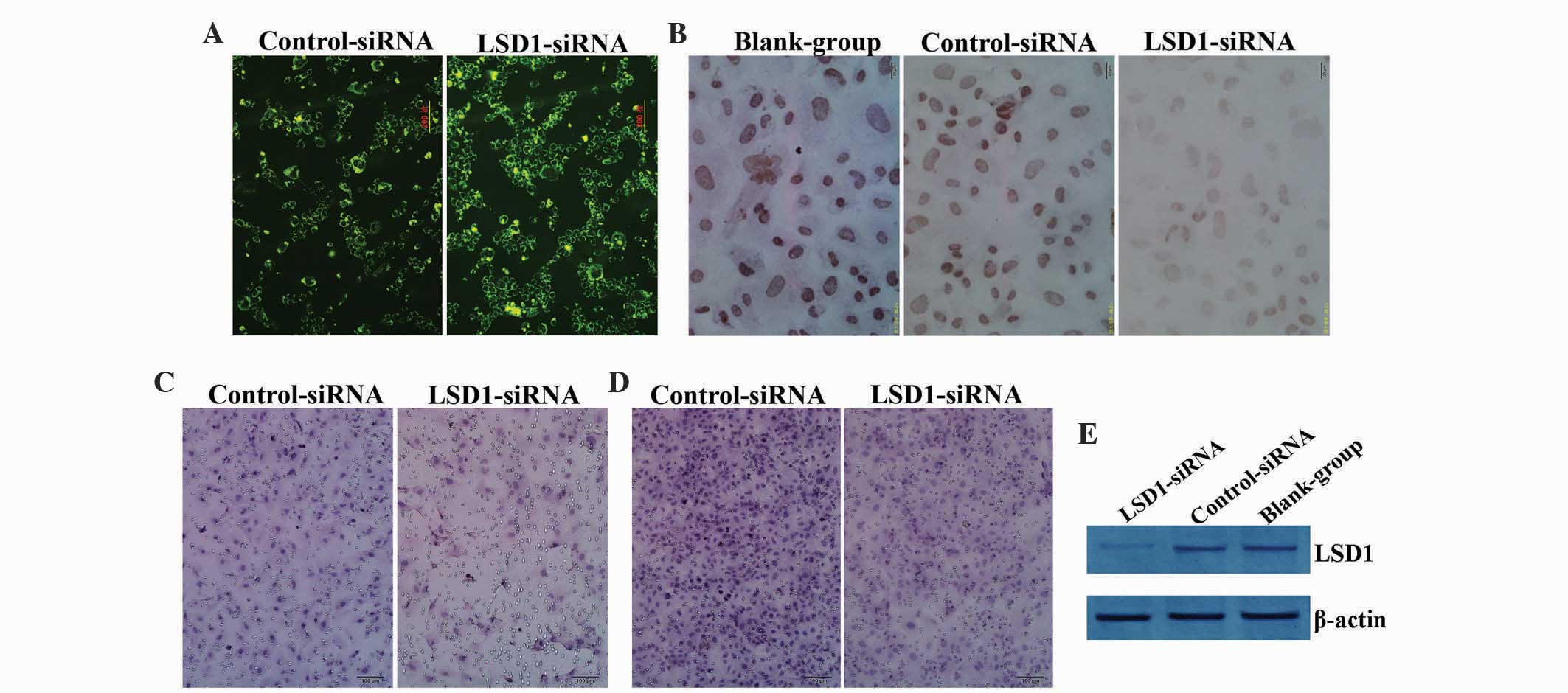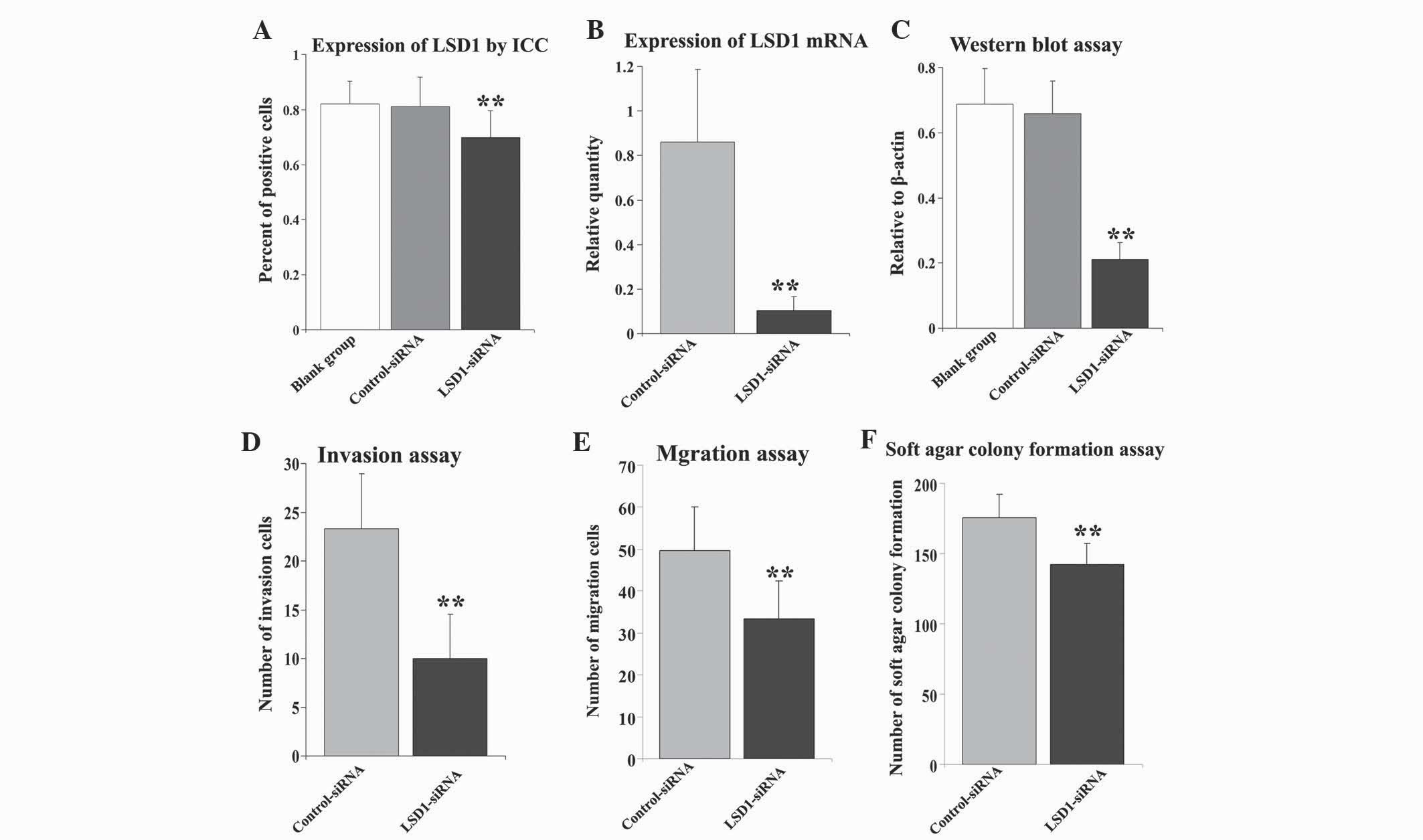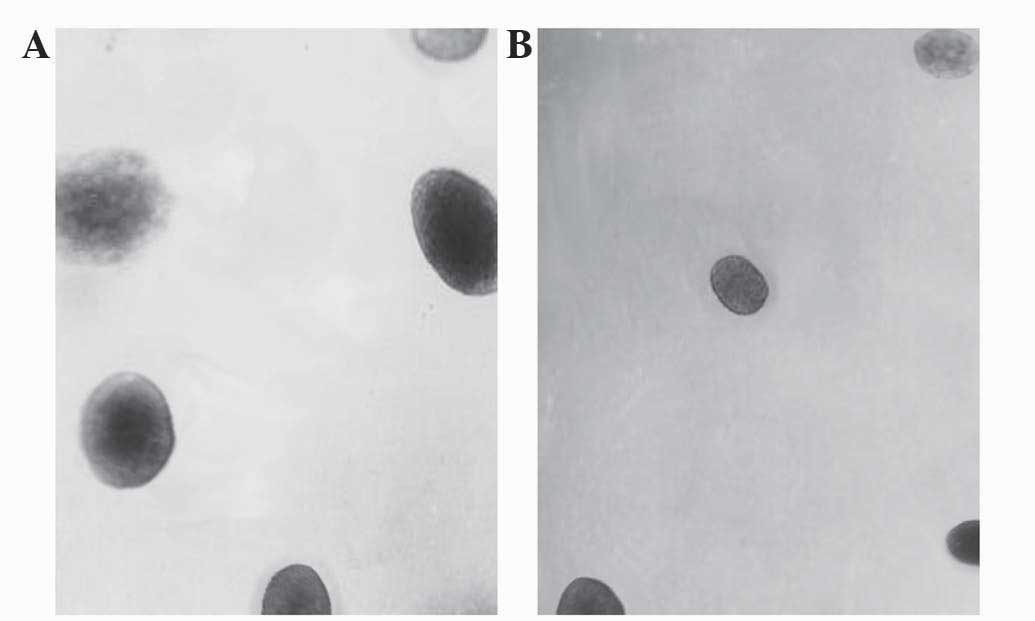|
1
|
Sherman SI: Thyroid carcinoma. Lancet.
361:501–511. 2003. View Article : Google Scholar : PubMed/NCBI
|
|
2
|
Hundahl SA, Fleming ID, Fremgen AM and
Menck HR: A National Cancer Data Base report on 53,856 cases of
thyroid carcinoma treated in the U.S., 1985–1995. Cancer.
83:2638–2648. 1998. View Article : Google Scholar : PubMed/NCBI
|
|
3
|
Colonna M, Uhry Z, Guizard AV, Delafosse
P, Schvartz C, Belot A and Grosclaude P: FRANCIM network: Recent
trends in incidence, geographical distribution, and survival of
papillarythyroid cancer in France. Cancer Epidemiol. 39:511–518.
2015. View Article : Google Scholar : PubMed/NCBI
|
|
4
|
Weir HK, Thompson TD, Soman A, Møller B
and Leadbetter S: The past, present, and future of cancer incidence
in the United States: 1975 through 2020. Cancer. 121:1827–1837.
2015. View Article : Google Scholar : PubMed/NCBI
|
|
5
|
McNally RJ, Blakey K, James PW, Pozo Gomez
B, Basta NO and Hale J: Increasing incidence of thyroid cancer in
Great Britain, 1976–2005: Age-period-cohort analysis. Eur J
Epidemiol. 27:615–622. 2012. View Article : Google Scholar : PubMed/NCBI
|
|
6
|
Zhang BL, Sivasubramaniam PG, Zhang Q,
Wang J, Zhang B, Gao JD, Tang ZH, Chen GJ, Xie XM, Wang Z, et al:
Trends in radical surgical treatment methods for breast
malignancies in China: A multicenter 10-year retrospective study.
Oncologist. 20:1036–1043. 2015. View Article : Google Scholar : PubMed/NCBI
|
|
7
|
Lei S, Ding Z, Ge J and Zhao D:
Association between prognostic factors and clinical outcome of
well-differentiated thyroid carcinoma: A retrospective 10-year
follow-up study. Oncol Lett. 10:1749–1754. 2015.PubMed/NCBI
|
|
8
|
Ho AS, Davies L, Nixon IJ, Palmer FL, Wang
LY, Patel SG, Ganly I, Wong RJ, Tuttle RM and Morris LG: Increasing
diagnosis of subclinical thyroid cancers leads to spurious
improvements in survival rates. Cancer. 121:1793–1799. 2015.
View Article : Google Scholar : PubMed/NCBI
|
|
9
|
Tuttle RM, Ball DW, Byrd D, Dilawari RA,
Doherty GM, Duh QY, Ehya H, Farrar WB, Haddad RI, Kandeel F, et al:
National Comprehensive Cancer Network: Thyroid carcinoma. J Natl
Compr Canc Netw. 8:1228–1274. 2010.PubMed/NCBI
|
|
10
|
Huang LY, Lee YL, Chou P, Chiu WY and Chu
D: Thyroid fine-needle aspiration biopsy and thyroid cancer
diagnosis: A nationwide population-based study. PLoS One.
10:e01273542015. View Article : Google Scholar : PubMed/NCBI
|
|
11
|
Wong CK and Wheeler MH: Thyroid nodules:
Rational management. World J Surg. 24:934–941. 2000. View Article : Google Scholar : PubMed/NCBI
|
|
12
|
Spencer C, Petrovic I, Fatemi S and
LoPresti J: Serum thyroglobulin (Tg) monitoring of patients with
differentiated thyroid cancer using sensitive (second-generation)
immunometric assays can be disrupted by false-negative and
false-positive serum thyroglobulin autoantibody misclassifications.
J Clin Endocrinol Metab. 99:4589–4599. 2014. View Article : Google Scholar : PubMed/NCBI
|
|
13
|
American Thyroid Association (ATA)
Guidelines Taskforce on Thyroid Nodules and Differentiated Thyroid
Cancer. Cooper DS, Doherty GM, Haugen BR, Kloos RT, Lee SL, Mandel
SJ, Mazzaferri EL, McIver B, Pacini F, Schlumberger M, et al:
Revised American Thyroid Association management guidelines for
patients with thyroid nodules and differentiated thyroid cancer.
Thyroid. 19:1167–1214. 2009. View Article : Google Scholar : PubMed/NCBI
|
|
14
|
Bourgeois P: A proposition for the use of
radioiodine in WDTC management. J Nucl Med. 50:328–329. 2009.
View Article : Google Scholar : PubMed/NCBI
|
|
15
|
Iyer NG, Morris LG, Tuttle RM, Shaha AR
and Ganly I: Rising incidence of second cancers in patients with
low-risk (T1N0) thyroid cancer who receive radioactive iodine
therapy. Cancer. 117:4439–4446. 2011. View Article : Google Scholar : PubMed/NCBI
|
|
16
|
Beaudenon-Huibregtse S, Alexander EK,
Guttler RB, Hershman JM, Babu V, Blevins TC, Moore P, Andruss B and
Labourier E: Centralized molecular testing for oncogenic gene
mutations complements the local cytopathologic diagnosis of thyroid
nodules. Thyroid. 24:1479–1487. 2014. View Article : Google Scholar : PubMed/NCBI
|
|
17
|
Xing M: Molecular pathogenesis and
mechanisms of thyroid cancer. Nat Rev Cancer. 13:184–199. 2013.
View Article : Google Scholar : PubMed/NCBI
|
|
18
|
Saji M and Ringel MD: The PI3K-Akt-mTOR
pathway in initiation and progression of thyroid tumors. Mol Cell
Endocrinol. 321:20–28. 2010. View Article : Google Scholar : PubMed/NCBI
|
|
19
|
Shi Y, Lan F, Matson C, Mulligan P,
Whetstine JR, Cole PA, Casero RA and Shi Y: Histone demethylation
mediated by the nuclear amine oxidase homolog LSD1. Cell.
119:941–953. 2004. View Article : Google Scholar : PubMed/NCBI
|
|
20
|
Zhang L, He LL, Fu QT and Xu ZF: Selection
of reliable reference genes for gene expression studies in the
biofuel plant jatropha curcas using real-time quantitative PCR. Int
J Mol Sci. 14:24338–24354. 2013. View Article : Google Scholar : PubMed/NCBI
|
|
21
|
Metzger E, Wissmann M, Yin N, Müller JM,
Schneider R, Peters AH, Günther T, Buettner R and Schüle R: LSD1
demethylates repressive histone marks to promote
androgen-receptor-dependent transcription. Nature. 437:436–439.
2005.PubMed/NCBI
|
|
22
|
Garcia-Bassets I, Kwon YS, Telese F,
Prefontaine GG, Hutt KR, Cheng CS, Ju BG, Ohgi KA, Wang J,
Escoubet-Lozach L, et al: Histone methylation-dependent mechanisms
impose ligand dependency for gene activation by nuclear receptors.
Cell. 128:505–518. 2007. View Article : Google Scholar : PubMed/NCBI
|
|
23
|
Livak KJ and Schmittgen TD: Analysis of
relative gene expression data using real-time quantitative PCR and
the 2(−Delta Delta C(T)) Method. Methods. 25:402–408. 2001.
View Article : Google Scholar : PubMed/NCBI
|
|
24
|
Feinberg AP, Ohlsson R and Henikoff S: The
epigenetic progenitor origin of human cancer. Nature Rev Genet.
7:21–33. 2006. View
Article : Google Scholar : PubMed/NCBI
|
|
25
|
Esteller M: Epigenetics in cancer. N Engl
J Med. 358:1148–1159. 2008. View Article : Google Scholar : PubMed/NCBI
|
|
26
|
Zhang Y and Reinberg D: Transcription
regulation by histone methylation: Interplay between different
covalent modifications of the core histone tails. Genes Dev.
15:2343–2360. 2001. View Article : Google Scholar : PubMed/NCBI
|
|
27
|
Sorna V, Theisen ER, Stephens B, Warner
SL, Bearss DJ, Vankayalapati H and Sharma S: High-throughput
virtual screening identifies novel
N'-(1-phenylethylidene)-benzohydrazides as potent, specific and
reversible LSD1 inhibitors. J Med Chem. 56:9496–9508. 2013.
View Article : Google Scholar : PubMed/NCBI
|
|
28
|
Zhang X, Tanaka K, Yan J, Li J, Peng D,
Jiang Y, Yang Z, Barton MC, Wen H and Shi X: Regulation of estrogen
receptor α by histone methyltransferase SMYD2-mediated protein
methylation. Proc Natl Acad Sci USA. 110:17284–17289. 2013.
View Article : Google Scholar : PubMed/NCBI
|
|
29
|
Lv T, Yuan D, Miao X, Lv Y, Zhan P, Shen X
and Song Y: Over-expression of LSD1 promotes proliferation,
migration and invasion in non-small cell lung cancer. PLoS One.
7:e350652012. View Article : Google Scholar : PubMed/NCBI
|
|
30
|
Zheng YC, Duan YC, Ma JL, Xu RM, Zi X, Lv
WL, Wang MM, Ye XW, Zhu S, Mobley D, et al:
Triazole-dithiocarbamate based selective lysine specific
demethylase 1 (LSD1) inactivators inhibit gastric cancer cell
growth, invasion and migration. J Med Chem. 56:8543–8560. 2013.
View Article : Google Scholar : PubMed/NCBI
|
|
31
|
Konovalov S and Garcia-Bassets I: Analysis
of the levels of lysine-specific demethylase 1 (LSD1) mRNA in human
ovarian tumors and the effects of chemical LSD1 inhibitors in
ovarian cancer cell lines. J Ovarian Res. 6:752013. View Article : Google Scholar : PubMed/NCBI
|
|
32
|
Rotili D, Tomassi S, Conte M, Benedetti R,
Tortorici M, Ciossani G, Valente S, Marrocco B, Labella D,
Novellino E, et al: Pan-histone demethylase inhibitors
simultaneously targeting jumonji C and lysine-specific demethylases
display high anticancer activities. J Med Chem. 57:42–55. 2014.
View Article : Google Scholar : PubMed/NCBI
|
|
33
|
Bennani-Baiti IM, Machado I,
Llombart-Bosch A and Kovar H: Lysine-specific demethylase 1
(LSD1/KDM1A/AOF2/BHC110) is expressed and is an epigenetic drug
target in chondrosarcoma, Ewing's sarcoma, osteosarcoma and
rhabdomyosarcoma. Human Pathol. 43:1300–1307. 2012. View Article : Google Scholar
|
|
34
|
Sakane C, Okitsu T, Wada A, Sagami H and
Shidoji Y: Inhibition of lysine-specific demethylase 1 by the
acyclic diterpenoid geranylgeranoic acid and its derivatives.
Biochem Biophys Res Commun. 444:24–29. 2014. View Article : Google Scholar : PubMed/NCBI
|
|
35
|
Schulte JH, Lim S, Schramm A, Friedrichs
N, Koster J, Versteeg R, Ora I, Pajtler K, Klein-Hitpass L,
Kuhfittig-Kulle S, et al: Lysine-specific demethylase 1 is strongly
expressed in poorly differentiated neuroblastoma: Implications for
therapy. Cancer Res. 69:2065–2071. 2009. View Article : Google Scholar : PubMed/NCBI
|
|
36
|
Huang Z, Li S, Song W, Li X, Li Q, Zhang
Z, Han Y, Zhang X, Miao S, Du R and Wang L: Lysine-specific
demethylase 1 (LSD1/KDM1A) contributes to colorectal tumorigenesis
via activation of the Wnt/β-catenin pathway by down-regulating
Dickkopf-1 (DKK1). PLoS One. 8:e700772013. View Article : Google Scholar : PubMed/NCBI
|
|
37
|
Ding D, Liu X and Guo SW: Overexpression
of lysine-specific demethylase 1 in ovarian endometriomas and its
inhibition reduces cellular proliferation, cell cycle progression
and invasiveness. Fertil Steril. 101:740–749. 2014. View Article : Google Scholar : PubMed/NCBI
|
|
38
|
Kong L, Zhang G, Wang X, Zhou J, Hou S and
Cui W: Immunohistochemical expression of RBP2 and LSD1 in papillary
thyroid carcinoma. Rom J Morphol Embryol. 54:499–503.
2013.PubMed/NCBI
|
|
39
|
Cherblanc FL, Davidson RW, Di Fruscia P,
Srimongkolpithak N and Fuchter MJ: Perspectives on natural product
epigenetic modulators in chemical biology and medicine. Nat Prod
Rep. 30:605–624. 2013. View Article : Google Scholar : PubMed/NCBI
|
|
40
|
Nana-Sinkam SP and Croce CM: Clinical
applications for microRNAs in cancer. Clin Pharmacol Ther.
93:98–104. 2013. View Article : Google Scholar : PubMed/NCBI
|













